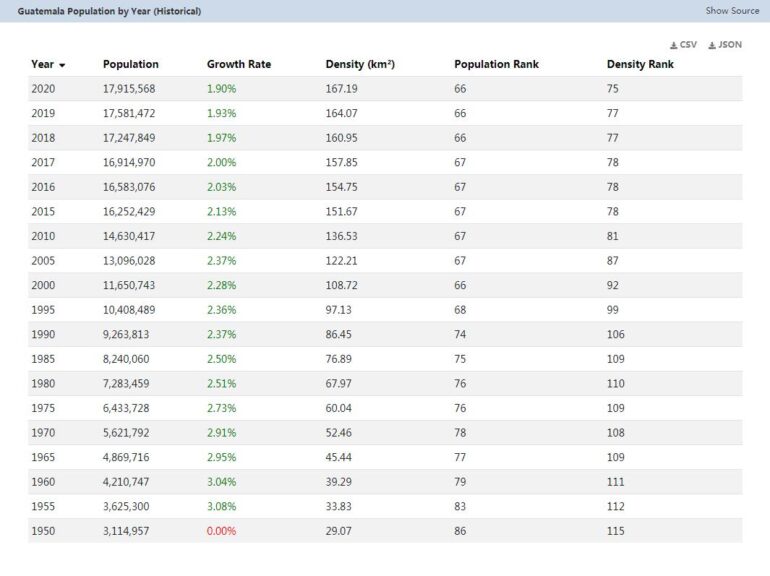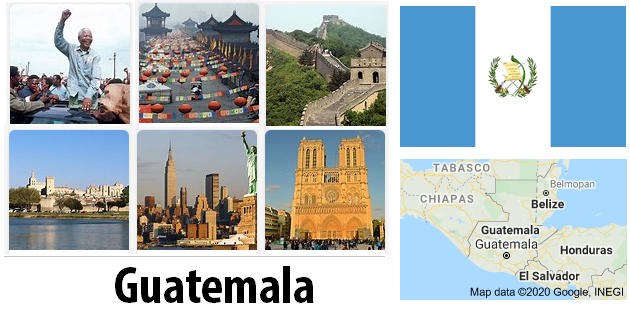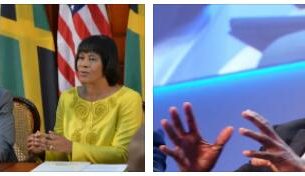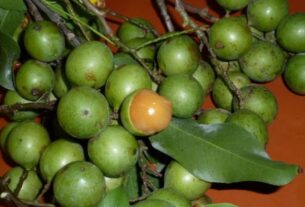Guatemala was conquered by Pedro de Alvarado in 1523. He found strong resistance in the very first inhabitants of the region, the Quichè, who however had been subdued by the Cakquiquel, who were instead very hospitable.
Alvarado was the first governor and founded the city of Santiago de Caballeros de Guatemala (July 25th1524). Upon her death, her widow, Beatrice de la Cueva, took over the reins of power and upon her death she ruled her brother Francesco together with Bishop Maroquin (1541), who rebuilt the city destroyed by a flood.
In 1542 an Audiencia was established whose first president was Alonso de Maldonado. Six years later the government was entrusted to Lopez de Cerrato who in 1549 decreed freedom for all slaves.
 Other more or less wise governors followed one another and in 1578 Garcia de Valcerde founded the University. See Countryaah for population and country facts about Guatemala.
Other more or less wise governors followed one another and in 1578 Garcia de Valcerde founded the University. See Countryaah for population and country facts about Guatemala.
In 1588 the governor Pietro Mayen de la Rueda had the port of Iztapa built. Still others founded cities and in 1659, under Martino C. de Mencos, typography was introduced in Guatemala, by Bishop F. Payo Enriquez de Ribera.
The successive governors each distinguished themselves for initiatives of improvements throughout the territory and on March 7, 1821, D. Gabino Gainza took office.
Following Mexico’s example, Guatemala also proclaimed its independence from Spain, joining the Mexican Empire, but on July 1, 1823, joining the Federation of United Provinces of Central America, definitively proclaimed its independence not only from Spain but also from Mexico.
Guatemala, incorporated into the state on 11 October 1825, he appointed Giovanni Barrundia as his head and the Constitution was promulgated on 28 November.
Both the headquarters of the president and the headquarters of the Federation, located in the same city, Guatemala la Nueva, the capital, expressed conflicting interests which led in a short time to internal conflicts of the various “caudillos” (leaders) with consequent successions of dictatorships and revolutions, E this in all the states of Central America.
The first who started was Francesco Morazan, who seized El Salvador and Honduras and then marched on Guatemala entering the capital on April 12, 1829.
Morazan in turn was eradicated and Guatemala was prey to Rafael Carrera (January 1838). who in April 1839 placed Mariano Rivera Paz at the head of the country, which broke the Federal Pact.
After leaving the Federation, Guatemala, under the Carrera dictatorship, dominated much of Central America until 1865 and helped with other states to thwart an attempt by the United States to occupy Nicaragua.
When Carrera died in 1865, Vicente Cerna was nominated president, who was also re-elected at the end of his term in 1869.
Shortly afterwards, two soldiers, General Miguel Garcia Granados and Colonel Justo Rufino Barrios, headed a revolt; they ousted Cerna and occupied the capital in 1871.
In 1873 the Constituent Assembly appointed Colonel Barrios as effective president. He gave considerable impetus to education, agriculture, commerce and public works and favored liberal and democratic institutions.
He remained in power until 1885 when Emanuele Lisandro Barillas was elected, who in 1887 proclaimed himself a dictator even if he later reestablished the constitutional order. In March 1888 he convened a Congress and proposed the diplomatic unification of all the Republics of Central America, under the supremacy of Guatemala. But there were no appreciable results, although peaceful and warlike attempts were made especially under the presidency of J. Santos Zelaya (1893).
In 1898 Manuel Estrada Cabrera was president who remained in power for many years until a revolt deposed him in 1920 and he was also imprisoned.
The next president was Carlo Herrera. During his mandate, on September 15, 1921, the Federation of Central America formed from Guatemala, Honduras and El Salvador, which however dissolved in 1922 due to a revolution that broke out in Guatemala itself, directed by the general, then president, Josè Orellana. But his assignment did not last long because the United States refused to recognize him. Other presidents took turns for short periods and in 1931 General Giorgio Ubico became president, or rather dictator, who exasperated the country’s nationalistic tendencies. He was deposed in 1944 by a military junta whose important member was Colonel Jacobo Arbenz Guzman.
The president in office in 1945 was Juan Josè Arevalo, also a convinced nationalist, with great sympathies for communism. And for this reason his was an all-left oriented policy as was the subsequent government (1950) chaired by Colonel Guzman. He, together with the General Confederation of Labor, promoted important social reforms, much appreciated by the masses. On 17 June 1952 the Agrarian Reform was launched with the consequent expropriation of uncultivated lands and immediately redistributed to the farmers. Among the expropriated lands many were of the United Fruit Company, an American, which controlled a large part of the country’s economy.
The UFC appealed to the State Department that, unable to invoke the Court of The Hague, asked the Guatemalan government for a stellar compensation of $ 15 million. Of course, this request was not even considered; the meetings of the OAS and the 10th Inter-American Conference of Caracas were vain, and when weapons from Poland began to flow into Guatemala, the United States openly sided against Guzman accusing him of wanting to wage war on the continent.
So on June 18, 1954, a Liberation Army from Honduras, commanded by Colonel Carlos Castillo Armas, entered Guatemala and quickly defeated Guzman’s troops.
He appealed to the United Nations but the inspectors sent to the scene already found a factual situation. Castillo Armas had already restored the order of his predecessors and was elected president on 10 October.
He was despotic and absolutist; it provoked rebellious motions that sedated with too energetic methods and therefore was assassinated (July 26, 1957).
Some temporary presidents were appointed up to the election of the conservative Miguel Ydigora Fuentes who, however, not having obtained the necessary majority, had to be confirmed in the office by Congress. Instead, the legislative elections recorded a clear victory for the right while the communists, represented by the Revolutionary Party, were declared outlawed.
In February 1960 Guatemala, Salvador and Honduras signed an Economic Association Treaty.
In the meantime, relations with Cuba had deteriorated considerably until relations broke and when attacks and unrest attributed to the “Castroists” took place in the country, it was necessary to impose the state of siege (19 July).


